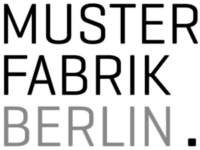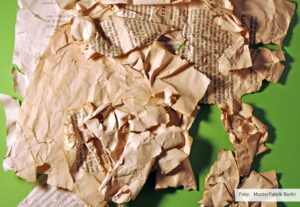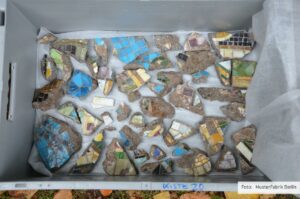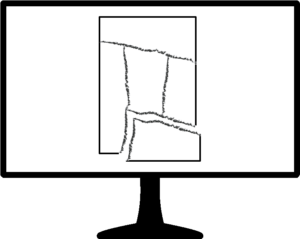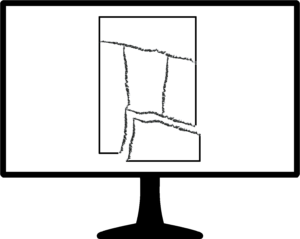
MusterFabrik Berlin develops and applies software modules for digital reconstruction and repositioning of multiply fragmented cultural objects using novel methods of image processing and pattern recognition. The software modules are designed for use in our automated assistance systems and provide workflows with extensive functionality for diverse reconstruction and repositioning tasks in the 2 D and 2.5 D range. With the help of our tools, archivists, restorers and archaeologists in particular are enabled to digitally restore material that was previously thought lost.
Application Fields of Digital Reconstruction
The tools we have developed for digital reconstruction and reposition are designed for all fields of application in which manual restoration is no longer possible with reasonable effort or at all due to the degree of damage and the (large) quantity of fragments.
- Common fields of 2-D application:
- Digital restoration of damaged and fragmented written materials from archives, libraries and museums.
- Common fields of 2.5-D application:
- Digital repositioning of randomly intermixed fragments from archaeological findings.
Problems of digital recovery in practical applications
Tasks in practice often aim at the digital reconstruction of multiply fragmented objects. The resulting problems are usually very complex because, in contrast to “classic puzzling”, the following requirements are not met in practice:
- Knowledge of target image
- There is usually no knowledge about the exact target of the reconstruction, i.e. unlike the classic puzzle, there is no image template that shows the finished puzzle result.
- Completeness of fragment set
- Due to their history, the fragments are often damaged and incomplete. This makes the process of digital restoration significantly more complex, as it cannot be assumed that a matching counterpart exists for every fragment.
Moreover, in practice, the goal is usually to restore a (very) large number of multiply fragmented objects in each case. The significantly less complex task of restoring a single fragmented object is rather the exception.
Real-World Solutions for Digital Recovery
The tools MusterFabrik Berlin has developed make many problems concerning multiply fragmented cultural assets manageable in the first place. Our methodological approach is based on practical, non-idealized assumptions.
- If no image templates (target images) exist in the application at hand, our algorithms evaluate the respective matching degree of so-called “puzzle candidates” on the basis of pairwise comparisons.
- For each comparison, only the features actually available in the respective pairing are used, since the specific feature expression of the respective fragments involved is usually not known a priori. This process is significantly more complex than the targeted search for previously known features.
- The computational effort per comparison is minimized as far as possible so that even very large fragment quantities can be processed in a time-efficient manner. For this purpose, the basic matching behavior of a pairing is first checked with the help of low-level features that can be calculated quickly, before detailed checks are carried out using more complex and more CPU-intensive high-level features.
